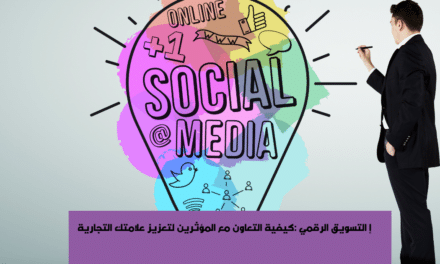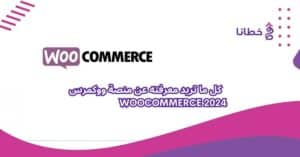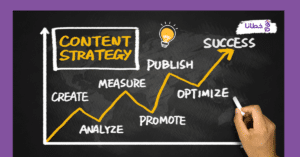table of contents
In recent years, integrated marketing communications (IMC) has become essential to any company’s success in the digital space. IMC is a marketing strategy that involves using a combination of different channels and tools to achieve marketing objectives in a coordinated and effective manner.
What is Integrated Marketing Communications?
Integrated marketing communications (IMC) is a comprehensive approach to planning and executing marketing communications. IMC involves using a combination of different channels and methods, such as advertising, email marketing, social media marketing, public relations, and direct marketing, to deliver a cohesive and consistent marketing message to target consumers.
The importance of integrated marketing communications
- Promote consistency and coherence: IMC ensures that all marketing communications align with each other and reinforce the company’s core message.
- Improving Customer Experience: IMC ensures that the customer experience with the brand is consistent and unified across all touchpoints.
- Increased effectiveness: By using a mix of different channels, IMC increases the effectiveness of marketing campaigns and reaches a wider audience.
- Performance Measurement: IMC provides tools to measure the effectiveness of marketing campaigns and analyze their results to improve future performance.
Integrated Marketing Communications Elements
1- Advertisements:
Whether print or digital, advertising is an essential part of IMC.
2- Email marketing:
Email is a powerful channel for direct communication with customers.
3- Social media marketing:
Social platforms allow businesses to interact with their audience and build relationships with them.
4- Public Relations:
Public relations helps build a good reputation for a company and enhance its image.
5- Direct marketing:
Direct marketing includes text messages, phone calls, and direct mail.
Implementing an integrated marketing communications strategy
- Set goals: Start by setting clear marketing goals such as increasing brand awareness or increasing sales.
- Choosing the right channels: Choose a mix of channels that suits your marketing goals and target audience.
- Target audience analysis: Understand the characteristics and requirements of your target audience to design effective messages.
- Create consistent content: Ensure that all marketing content is consistent in message and visual identity.
- Measure performance: Use KPIs to evaluate the effectiveness of campaigns and improve them in the future.
Marketing Communication Jobs
Marketing communication functions are of great importance to any organization or company, the most important of which are:
1- Drawing marketing strategies:
- Develop communication and promotion plans for products and services.
- Market and competitor research and customer needs analysis.
- Identify the most effective goals, methods, and channels.
2- Public relations management:
- Continuous communication with customers, partners and stakeholders.
- Dealing with crises, complaints and solving problems.
- Managing the company’s reputation and image.
3- Promoting and advertising products and services:
- Using different marketing channels (advertising, public relations, digital marketing, …).
- Organizing events and promotional activities.
- Preparing effective advertising and promotional materials.
4- Marketing research and analysis:
- Making appropriate marketing decisions based on available information.
- Collect and study data about the market, customers, and competitors.
- Measuring the effectiveness of marketing and communication campaigns.
5- Coordination and integration with other departments:
- Coordination with sales, development, production, etc.
- Ensuring the integration of marketing and communication efforts.
- Contribute to achieving the goals of the organization as a whole.
In general, marketing communication functions play a pivotal role in the success and growth of any organization by connecting the brand with customers and enhancing its image and competitive position.
Marketing communication characteristics
Marketing communication is characterised by a set of important characteristics and features, the most prominent of which are:
1- Integration and compatibility:
- Marketing communication must be integrated and coordinated with other marketing and promotional activities.
- Harmony between messages and methods used across different channels.
2- Targeting and guidance:
- Focus on your target audience and understand their needs and behaviors.
- Design messages and campaigns to suit target audiences.
3- Effectiveness and measurement:
- Ability to measure and track the results of campaigns and communication activities.
- Use indicators and tools to measure performance and impact.
4- Continuity and renewal:
- Keeping pace with developments and changes in the market environment and technology.
- Maintain continuous and constant communication with the public.
5- Attractiveness and creativity:
- Use attractive methods and artistic flair in designing messages.
- Innovation and excellence in creative content and methods.
6- Interactivity and flexibility:
- The ability to adapt and respond quickly to changes.
- Enhancing interaction and dialogue with the audience.
These characteristics help develop effective and successful marketing communication that achieves the desired goals of the organization.
Example of marketing communication
There are many examples of effective marketing communication, including:
Example 1: Social media marketing campaign for a clothing company:
- The company uses the main hashtags #fashion2023 and #winterclothes to facilitate access to the target audience.
- In addition, followers are encouraged to participate and interact through special contests and offers.
- This campaign features integration across various social media platforms and a focus on the target audience.
- The company is creating an Instagram and Twitter account to showcase and promote its new products.
- Attractive photos and videos of clothing are posted with detailed product descriptions and prices.
Example 2: Electric car advertising campaign at an auto show:
- The manufacturer is dedicating a large pavilion at the exhibition to display its new electric car models.
- Interactive video displays and augmented reality technologies are used to highlight the cars’ features and technical specifications.
- Distributing brochures and information materials containing detailed information about the products and technology used.
- This campaign focuses on the effective use of multimedia and direct interaction with the audience.
- Engage visitors in live electric vehicle test drives to enhance their experience.
These two examples illustrate how to design and implement integrated and effective marketing communication campaigns using a range of modern methods and techniques.
The difference between marketing communications and integrated marketing communications
Marketing communications and integrated marketing communications are two distinct, yet closely related, concepts. Here are the main differences between them:
1- The concept:
- Marketing communications refers to the use of a variety of communication channels and marketing tools to build relationships with customers and promote products and services.
- Integrated Marketing Communications (IMC) is a comprehensive approach that aims to unify and coordinate all elements of marketing communications to create a cohesive and unified message.
2- Scope:
- Marketing communications focuses on the use of specific channels and tools such as advertising, personal selling, and sales promotion.
- Integrated marketing communications takes into account all available communication channels and coordinates them strategically.
3- Objective:
- Integrated marketing communications aims to build long-term relationships with customers and integrate all marketing activities.
- Marketing communications aim to promote products and services and influence consumer behavior.
In general, it can be said that integrated marketing communications is a more comprehensive and integrated approach to marketing communications, as it works to unify all elements of marketing communication to create a cohesive message and achieve marketing objectives more effectively.
The impact of marketing communications on improving the brand’s mental image
Marketing communications play an important role in improving a brand’s image. Here are some ways marketing communications influence brand image:
1- Creating a cohesive identity:
- Marketing communications help create a cohesive brand identity by using the same language, messages, colors, and images across all communication channels.
- This helps create a strong and unified brand image in the minds of consumers.
2- Enhancing brand awareness and recognition:
- Integrated marketing communications helps increase brand awareness and make it more recognizable to consumers through advertising, promotions, and media campaigns.
- Increasing brand awareness and recognition contributes to building a positive mental image.
3- Highlighting the brand’s values and characteristics:
- Through marketing communications, companies can highlight the values and characteristics of the brand and the benefits it offers to consumers.
- This cohesive, brand-oriented content helps create a positive and strong mental image.
4- Participation and interaction with consumers:
- Integrated marketing communications allows companies to interact and engage with consumers across social media and other channels.
- This interaction helps build relationships and trust with consumers, which positively impacts the brand’s image.
Ultimately, using integrated marketing communications in a strategic and unified manner significantly contributes to improving a brand’s image and strengthening its position in the minds of consumers.
Create an integrated marketing communications plan
There are some key steps to creating an integrated marketing communications plan:
1- Analysis of the current situation:
- Strengths, Weaknesses, Opportunities, and Threats (SWOT) Analysis
- Understanding the marketing environment and competition
- Evaluate current marketing performance
2- Defining goals and strategies:
- Set specific objectives for marketing communications (raising awareness, enhancing image, increasing sales, etc.).
- Develop communication strategies to achieve these goals.
3- Determine messages and content:
- Create coherent and engaging content (text, images, videos, etc.).
- Formulating marketing messages appropriate to the target audience.
4- Choosing communication channels:
- Identify the most effective channels for communicating messages (ads, social media, email, etc.).
- Ensure integration and harmony between all communication channels.
5- Determine the budget and schedule:
- Develop a timeline for implementing communication campaigns and activities.
- Allocating financial and human resources for communication activities.
6- Performance measurement and evaluation:
- Identify key performance indicators to measure the effectiveness of marketing communications.
- Continuously evaluate performance and make necessary adjustments.
During these steps, an integrated marketing communications plan is created that is consistent and effective in achieving the company’s marketing goals.
The role of Khutana E-Marketing Services Company in creating integrated marketing communications
Khutana DE-Marketing Services Company can play an important role in developing and implementing an integrated marketing communications plan for its clients, by performing the following tasks:
1- Analysis of the current situation of khutana e-marketing:
- Identify the strengths, weaknesses, opportunities and threats (SWOT) of each client.
- Conducting comprehensive research and analysis of the competitive and market situation of its clients.
2- Setting strategies and objectives for khutana e-marketing:
- Assist in setting realistic and measurable marketing communication objectives.
- Develop integrated communication strategies to achieve these goals.
3- Creating content and messages from khutana e-marketing:
- Create engaging and valuable marketing content for your target audience.
- Crafting effective and relevant marketing messages for each communication channel.
4- Managing communication channels from khutana e-marketing:
- Implementing advertising campaigns across digital channels (such as paid advertising, search engines, and social media).
- Managing direct communication channels with customers (email, text messages, etc.).
5- Performance measurement and analysis from khutana e-marketing:
- Develop key performance indicators to evaluate the effectiveness of marketing communications.
- Providing periodic reports and recommendations for performance improvement.
Through these tasks, Khutana contributes to the development and implementation of an integrated and effective marketing communications strategy for its clients, leading to the achievement of their marketing goals.
Conclusion on Integrated Marketing Communications
Integrated marketing communications (IMC) is a powerful strategy for achieving digital marketing goals. By using a consistent mix of different channels and methods, companies can enhance the consistency of their marketing messages, improve customer experience, and increase the effectiveness of their campaigns. Proper planning and execution of IMC will be key to any digital company’s success in today’s competitive marketplace. Creating integrated marketing communications is key to any brand’s success in an increasingly competitive digital world.
By leveraging the expertise and services offered by Khutana E-Marketing Services, businesses can develop effective communication strategies that help them reach and engage with their target audience more effectively. If you have any questions or comments about how to develop your company’s marketing communications, feel free to leave a comment below or subscribe to our newsletter for more tips and guidance on this important topic. Together, we, as a dedicated team at Khutana, can help you achieve your marketing goals and increase your brand’s success.
Integrated Marketing Communications Article Questions: 5 Steps to Boost Your Digital Business’s Success
What is meant by integrated marketing communications?
Integrated Marketing Communications (IMC) is a theory and set of business practices that facilitate consistent messaging across channels and produce a unified brand experience for customers.
What are the five steps of digital marketing?
Measure results and KPIs.
Define your marketing strategy.
Conduct a SWOT analysis.
Define your buyer persona.
Set your goals.
What is IMC strategy?
An interactive marketing strategy aims to assist consumers throughout the buying process. By understanding your market, your specific objectives, and the points you want to communicate, you can help consumers throughout the buying process.
What is the purpose of IMC?
It’s the process of aligning your brand, tone of voice, and message across every customer touchpoint. The ultimate goal of IMC is to ensure customers have the same experience with your company, regardless of the channel they interact with.
We respect and value your time... half an hour to grow your project
































